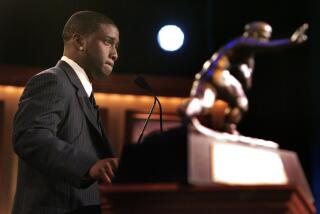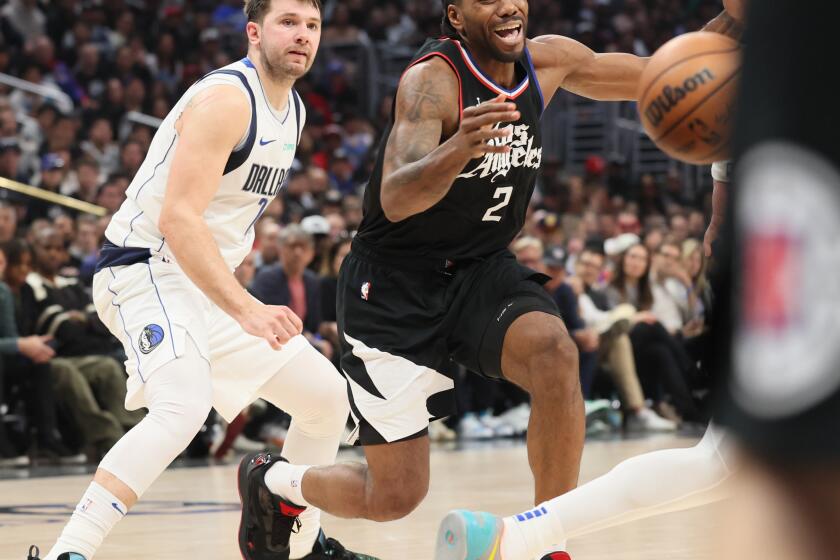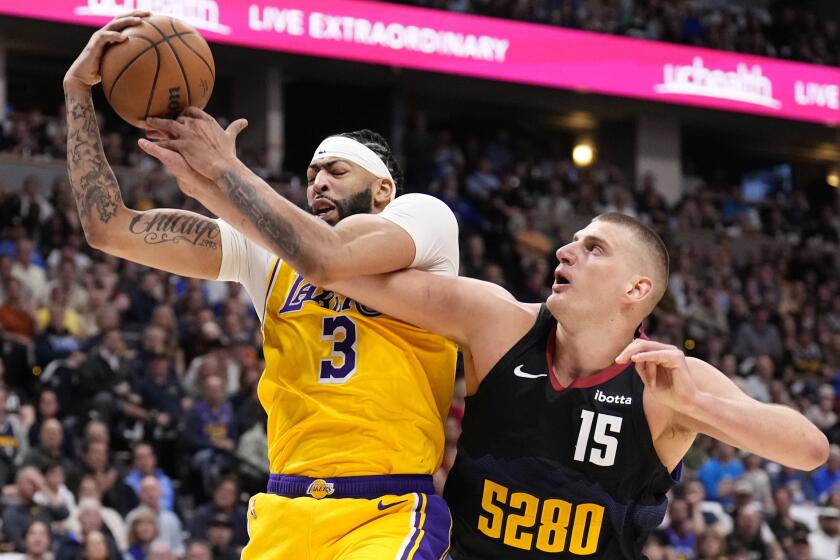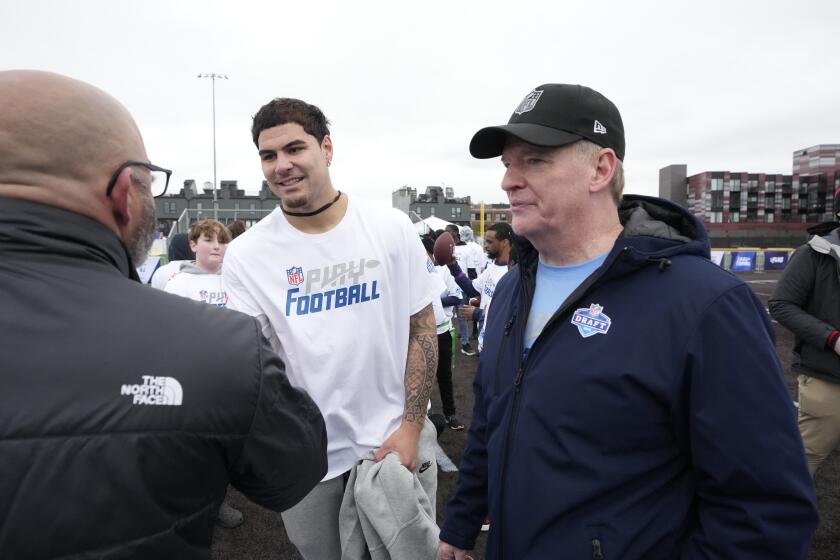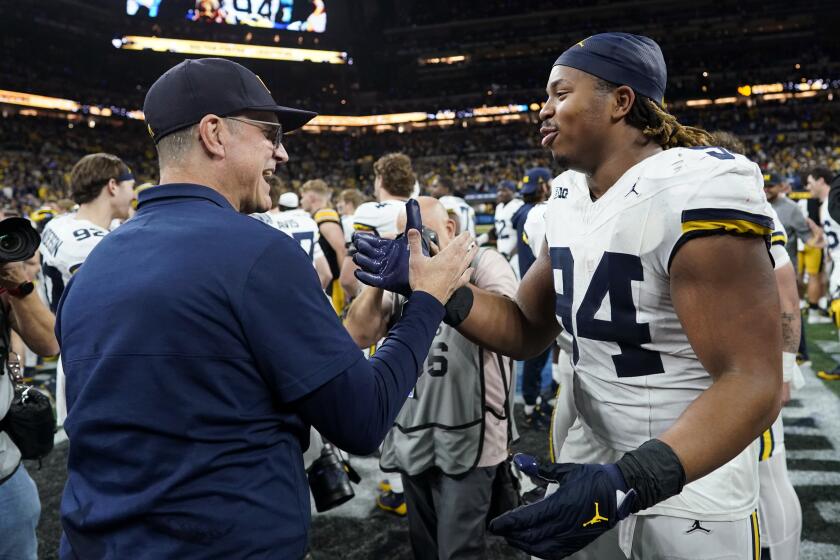Thinking big
A significant turning point for Maya Gabeira -- one of many in her turbulent life -- occurred Super Bowl Sunday, Feb. 5., 2006.
She’d moved from Brazil to Hawaii and had become passionately addicted to surfing large waves.
“Waimea was the first huge wave I ever saw, and I just felt that was what I wanted to do for my life,” she says.
She’d ridden Waimea Bay, but not during one of those epic swells, when Oahu’s entire North Shore falls under a booming assault that separates men from boys and transforms virtually all women into spectators.
She arrived in time to witness a gigantic set of waves breaking clear across the bay, blitzing the paddling channel. This occurs only when wave faces surpass 50 feet.
Gabeira was terrified. But friends told her the closeout sets were 30 minutes apart, so off she hustled, eventually gaining the lineup, where she bobbed like a tiny cork astride her 10-foot-4 gun.
“I caught four waves in four hours,” she boasts. “And one was my very best wave, and I remember when I came in I was so high. And I think I was high for like 10 days.”
The striking Gabeira had, at 18, become a bona fide big-wave surfer. She went on to tackle Maverick’s near Half Moon Bay and Dungeons off South Africa.
Last summer she graduated to the daredevil sport of tow surfing, where jet-skis and ropes are used to pull surfers onto larger and faster waves, with fellow Brazilian Carlos Burle as partner and mentor.
That led to a trip to Teahupoo in Tahiti, where she overcame a savage wipeout to conquer some of the most dangerous waves on earth.Tonight Gabeira, who turned 21 on Thursday, will be one of three women honored during the Billabong XXL Global Big Wave Awards at the Grove of Anaheim. Gabeira is heavily favored to win the Women’s Overall Performance award for the second consecutive year.
“She’s shattered every barrier women’s surfing has known when it comes to big waves,” says Bill Sharp, director of the yearlong contest. “She routinely rides waves bigger than 99.9% of the men in the surfing world would ride.”
And to think hers is a story that might not be told, were it not for a turbulent life as a child.
Her father, Fernando Paulo Nagle Gabeira, is a longtime Brazilian politician best-known for writing the 1979 book, “O que e isso companheiro?” or “What are you doing, comrade?”
It chronicles the armed resistance to the South American nation’s military dictatorship and specifically the 1969 kidnapping of American ambassador Charles Burke Elbrick, by the revolutionary movement MR8, of which Gabeira was a member.
It became a popular English-language movie, “Four Days in September,” and Gabeira, the daughter, says she cried while watching it. “He has always been an inspiration,” she says of her father, now a Rio de Janeiro congressman running for governor.
Gabeira’s mother, Yame Reis, is a renowned fashion designer.
Her parents divorced when she was 11, leaving her angry and depressed. “That’s the worst time,” she says, “because you’re not young enough to not notice it, and not old enough to be able to manage it.”She struggled in school and argued often with her mother, then moved in with her father, who was away often because of his career. Gabeira lacked enthusiasm and direction, until giving surfing a try when she was 14. “It made me feel so happy and so stoked to be able to conquer something,” she recalls.
The next year she was sent to Australia on a student-exchange program and discovered better waves and a surfing culture that embraced girls. She decided she’d move there after high school but moved instead to Hawaii, got a job as a waitress and discovered Waimea.
“My mom was against it and my dad was too, but he just wanted to see me happy,” Gabeira recalls. “So I left and then they both realized, ‘Wow, she’s not coming back.’ Nobody could visualize where I was headed.”
So she surfed by day and worked by night. Bravado combined with beauty helped her land sponsorship deals with Red Bull and Billabong. A career was launched.
Last August she hooked up with Burle, a fellow Red Bull team rider, and new doors were open -- behind which lay snarling, spitting and potentially maiming beasts such as those that surfaced Nov. 1 at Teahupoo.
Burle was eyed suspiciously by some who believed, perhaps, he was leading a lamb to slaughter.
“What do you say about a woman going out there and doing it? I’d say women, men . . . at the end of the day we’ve all got a shot,” says Laird Hamilton, a legendary waterman, non-judgmentally. “If you’ve got a calling to go and ride waves like that, then more power to you.”
Teahupoo, like Waimea, has killed and seriously injured surfers. Its waves are not as towering but contain just as much water. Fast-moving swells are compressed into the reef. Long walls jack swiftly upward and heave lips that are frighteningly thick.
Barrels are literally round enough to fit a bus and those lips smash upon water only four to six feet deep.
“I was scared. Of course I was scared,” Gabeira recalls.
Her first try was from behind a jet-ski driven by Raimana Van Bastolaer, a local legend. It was a large set wave, though, and Van Bastolaer, sensing his partner was too deep, tried to abort.
But Gabeira had already let go of the rope and was on the shoulder, and found herself too high on the face, getting sucked upward.
A ledge had formed in the face and she managed to air-drop onto her back, whereupon she was quickly sucked over like a clump of lifeless kelp and smashed anyway.
“I was just hoping for the best, and ready for the worst,” says Hamilton, who raced to her rescue.
“You don’t know what you’re going to get, or if it’s going to come up in chunks or in one piece.”
Finally, she was able to tuck nicely into several blue barrels to further establish herself as a budding star in this male-dominated universe.
She’s honored to be part of tonight’s awards ceremony, she says, but her brown eyes sparkle and her smile widens when she reveals the real reason she’s looking so happy.
“My mom is coming all the way from Brazil,” she says. “She’s going to be with me. I can’t wait.”
--
More to Read
Get our high school sports newsletter
Prep Rally is devoted to the SoCal high school sports experience, bringing you scores, stories and a behind-the-scenes look at what makes prep sports so popular.
You may occasionally receive promotional content from the Los Angeles Times.


